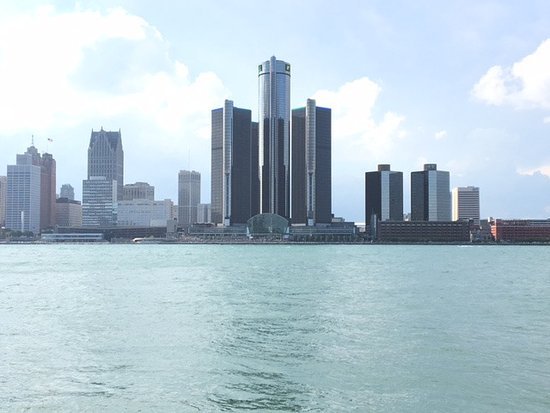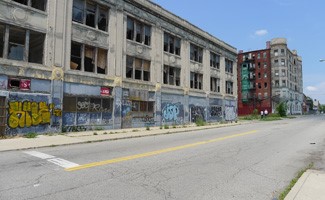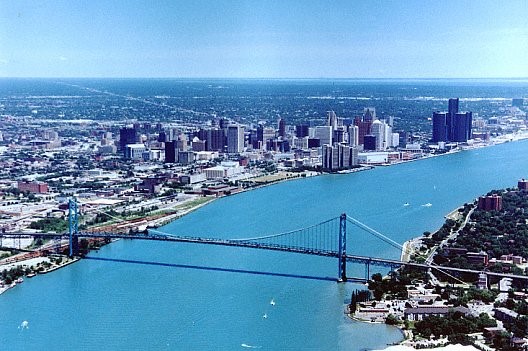Program Notes
Impressions of Detroit was originally written in 1989, while the composer lived in the city, it was revised in 2010. Even in decline, Detroit is the definition of “solidly built.” Many of the massive structures were built in the 1920s and 1930s, such as the train station, the library, and the Detroit Institute of Art. The huge rotting Ford factories in Highland Park, as well as the empty downtown department stores, bank buildings and Tiger Stadium (demolished in 2009) in CorkTown have many untold stories of thousands of people. And juxtaposed against all this is the massive steaming River Rouge Ford automobile plant.
The composer tried to describe musically some of the power of this past great city. It is poignant to witness the results of previous people's hopes and dreams and tragic, at the same time, as one gazes at such past immense wealth, power and beauty. It is probably a sense akin to the original discoveries of the contents of the pyramids, or an ancient civilization – if one takes a moment to observe and absorb.
Movement 1: “The Summit” is about one of the largest buildings of downtown Detroit. It lies at the river’s edge and from the top of the building one can see all of Detroit, which is modeled after Paris, with large boulevards flowing out like sun rays. This majestic building was originally a hotel, but now is home to General Motors.
Movement 2: “The Corridor” is a vision of Cass Corridor, which has declined over the years. Once it boasted restaurants, jazz clubs and the like. Recently it is a subculture area upon which Wayne State University borders. As one wanders down this street, one imagines ghosts of earlier, happy times, as well as tragedies.
Movement 3: “The Bridge” is a musical description of the Ambassador Bridge which connects Detroit with Windsor, Canada. The bridge is a spanned bridge, which is majestic and a tribute to the cooperation between the United States and Canada. When crossing from Canada, the bridge rises above the city, seemingly aloof to what lies below, but quickly brings the traveler into the harsh reality which is the physical remains of a once Great City.



Impressions of Detroit is dedicated to the composer’s father, who worked as a church organist his entire life.
Suite for Brass: “Dinner for Two Parties of Four” was originally written in 1985 for Sam Pilafian and the Boston University Tuba Ensemble. That version was consequently performed as well by the Northwestern University Tuba Ensemble in 1991 in Evanston, Illinois. In both those performances, the third movement featured each player also playing one component of a drum set, as well as their tuba. Due to musical considerations this revision demands a separate percussionist. This revision was completed in June of 2013. The Suite contains three movements (courses): Champagne and Caviar; Duckling in Red Wine; and Cognac and Cuban Cigar.
Performance Notes: Euphonium and Baritone Horn can be interchanged. The composer thought the first movement appropriate for the timbre of a euphonium, but he acknowledges he might fail a blind fold test! Exact tempos are up to the conductor, bearing in mind the incredible aural effect of such a group in a concert space! The second movement is a lyrical ode which builds to a sonorous (to be obvious) conclusion. The final movement is a joyful jaunt through several musical periods (the reference to Mr. Haydn should be somewhat slower) and can conclude with a typical “Riff Cadenza'' (ala blues) befitting such a “meal”! The percussionist may improvise, keeping in mind “the flavor” implicated in the written part!